Florence Method
State of the art method from
overseas, an [outpatient] procedure
to treat Spinal Stenosis
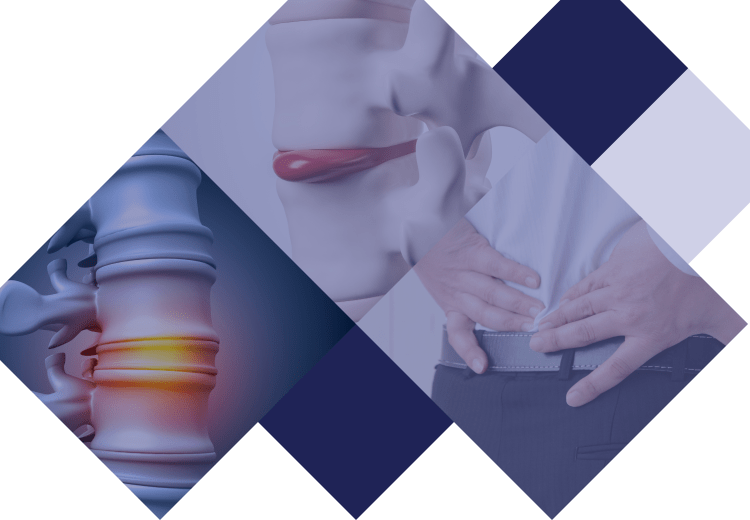
Contents
 Table of Contents
Table of Contents
- 1 Features of the Florence Method
- 2 Two Merits of the Florence Method's Treatment
- 3 Details, Research and Papers about the Florence Method
- 4 Florence Method Treatment
- 5 Diseases and symptoms covered by the Florence Method
- 6 Florence Method Treatment Method
- 7 Florence Method Treatment Costs
- 8 Q&A Regarding the Florence Methods
Florence Features of the Florence Method
-
Feature ①
A new type of treatment for spinal canal stenosis that can be done as an outpatient treatment.
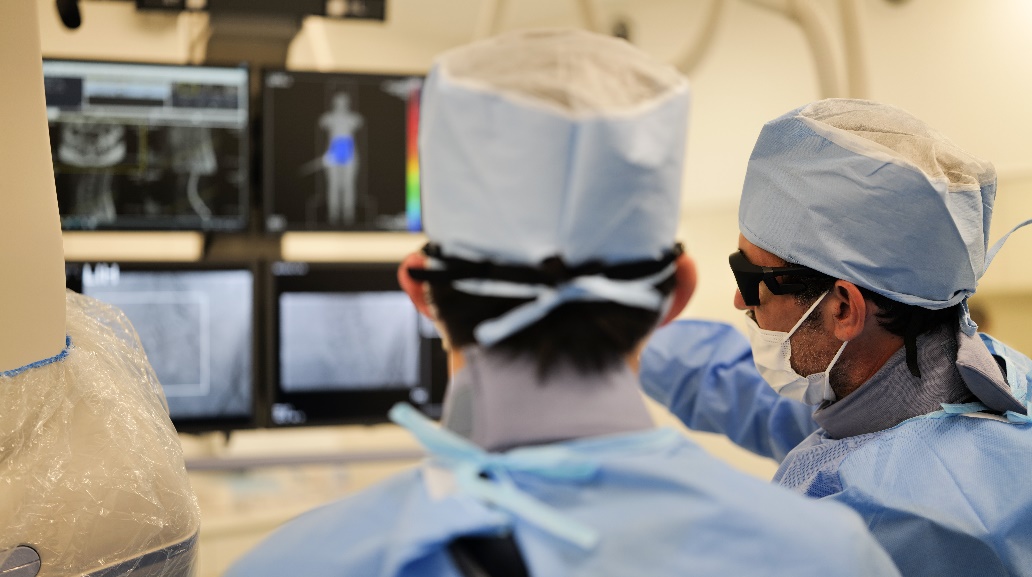
-
Feature ②
Using advanced technology and implants from overseas, it's minimally invasive, leaving just a small 1-2cm cut

-
Feature ③
Since we do not use general anesthesia, it is possible for even the elderly can receive treatment. It 's a treatment that is easy to consider even for those who do not want or are unable to undergo surgery

Two Merits of the Florence Method's Treatment
There are two main advantages of the Florence method.
[Merit point 1] You can create a "slouching posture" that relieves intermittent claudication.
-
What is "intermittent claudication", a characteristic symptom of spinal canal stenosis?
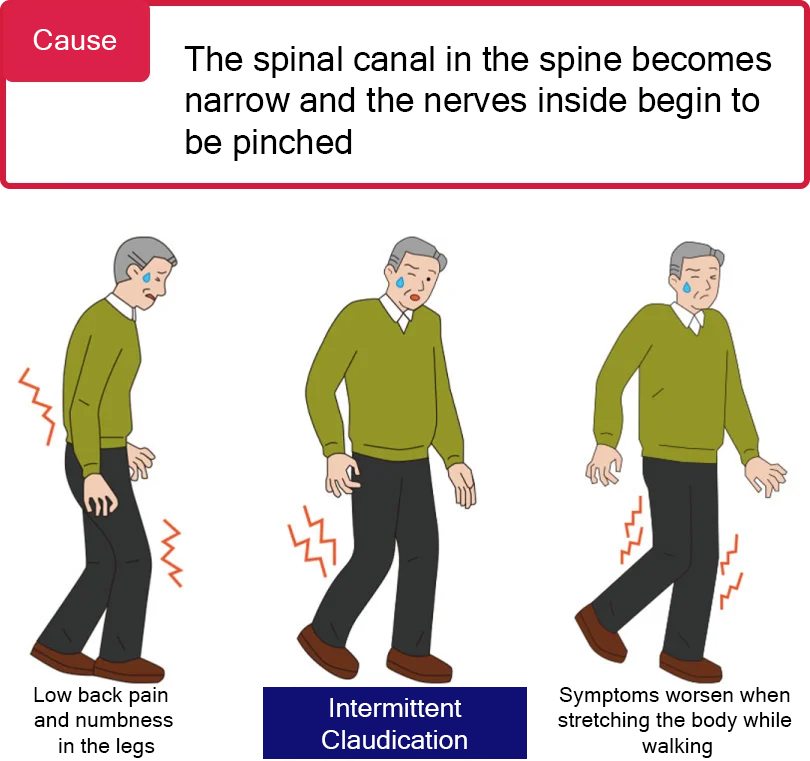
-
What is a comfortable posture when suffering from intermittent claudication?

-
To further explain the mechanism of intermittent claudication using an illustration of the lumbar vertebrae:

By inserting a special implant using the Florence method, you will be in a state similar to "leaning forward".
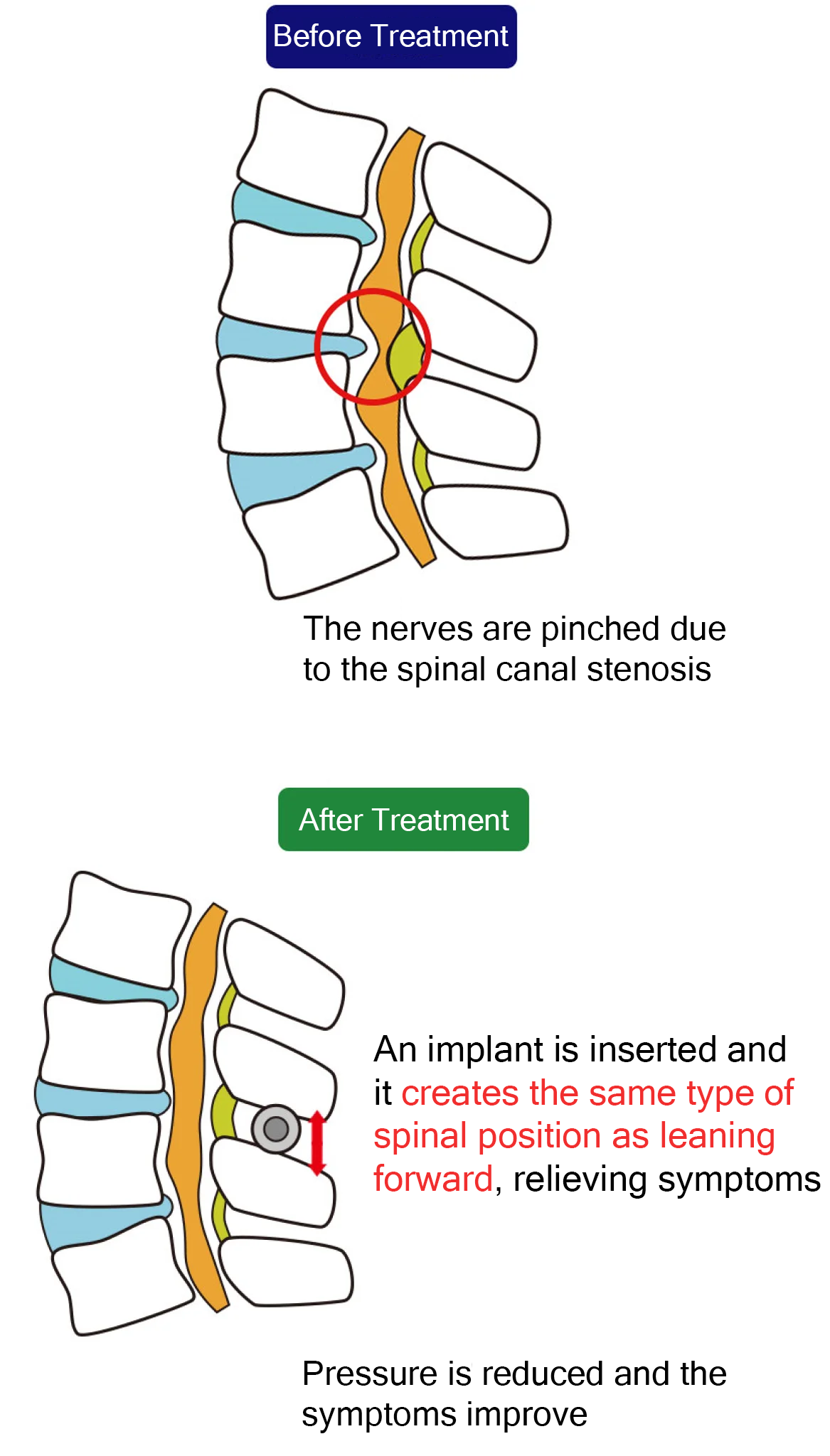
★You can clearly see it in the MRI images before and after the treatment.
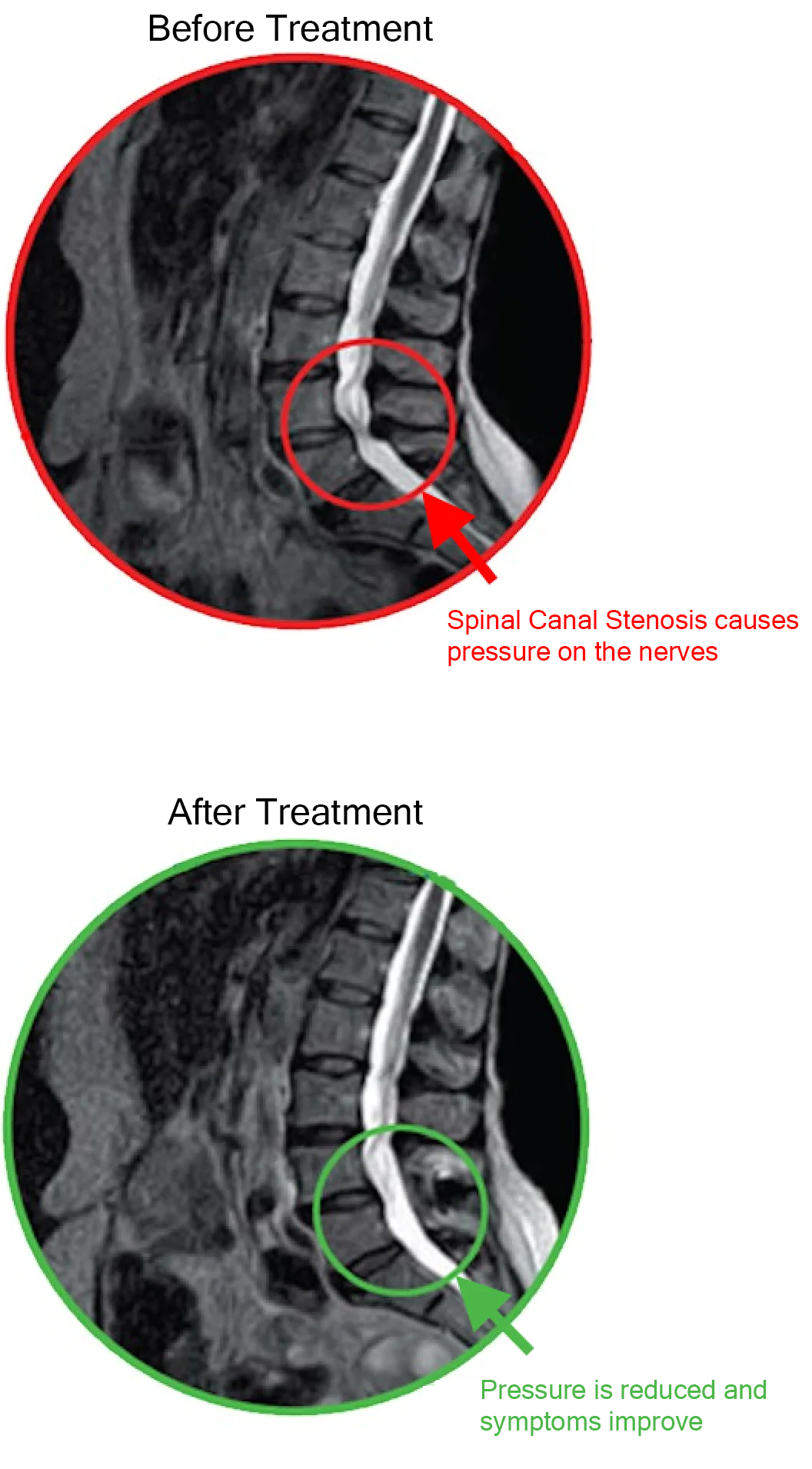
In spinal canal stenosis, degenerated discs and ligaments press on the nerves, causing symptoms of pain and numbness, but with the Florence method, the pressure on the nerves disappears and symptoms such as pain and numbness improve.
[Merit point 2] Implants are placed in a minimally invasive manner using special dedicated instruments . Therefore, compared to the method of placing an implant through an incision, important ligaments are preserved and stability is increased.
There are several ligaments surrounding the area where the implant will be placed. Ligaments have the role of connecting and stabilizing bones, and the more ligaments are removed or reduced, the more unstable the spine becomes.

★With the Florence method, an implant can be inserted while preserving both the ligamentum flavum and the supraspinous ligament.

★The Florence method uses a special movable butterfly shape to provide firm stability. And since the ligaments are preserved, displacement of the implant and spinal instability are reduced.
Details, research, and papers on the Florence method
The Florence method is an advanced treatment for spinal canal stenosis that has been introduced mainly in Europe and South America.
Spinal stenosis is when the intervertebral discs degenerate, resulting in herniated discs, or when the vertebrae lose stability and slip, narrowing the spinal canal and putting pressure on the nerves. This causes symptoms such as lower back pain and pain and numbness in the lower limbs, making it difficult to walk.
Spinal canal stenosis is the most common spinal disease, according to the spine surgery survey report of the Japanese Society of Spine and Spinal Cord Disease. *1
It is particularly common in people over 50 years old, and it is said that one in two people over 70 years old may be affected by this disease. *2
*1 Reference source: Yutaka Nohara et al., “Spine Surgery Survey Report of the Japanese Society of Spinal and Spinal Cord Disease,” “Journal of the Japanese Society of Spine and Spinal Cord Disease,” Vol. 15, No. 2, 2004.
*2 Reference source: Ken Yamazaki, “Lumbar spinal stenosis treatment strategy: Epidemiological survey and QOL survey of lumbar spinal stenosis—Prevalence and health-related QOL survey of the general population in local cities,” Monthly Book Orthopedics, Vol. 23 No., 2010.
Surgical operations (laminectomy and spinal fusion) are often performed to widen the narrowed spinal canal, but within 10 years after surgery, severe back pain may recur or you may be unable to walk long distances. It may disappear or require another surgery. This is because the surgical procedure carries a high risk of damage to surrounding tissues such as ligaments and muscles, as well as damage to new bones caused by the screws. Therefore, the recurrence rate of symptoms is high after surgery.
Additionally, patients with heart disease or respiratory disease may not be able to undergo surgery under general anesthesia.
The Florence method is a low-risk, minimally invasive treatment for spinal stenosis.
A spacer is inserted percutaneously under local anesthesia and sedation to widen the narrowed spinal canal. It can be removed after treatment.
By inserting a Lobster spacer, it is possible to stabilize the vertebral body while maintaining spinal rotation and flexion, widening the spinal canal, suppressing disc protrusion, and reducing ligamentum flavum thickening. The pain is relieved by widening the narrowed spinal canal. We recommend it to patients who have not improved with conservative treatment and who wish to avoid surgical procedures performed under general anesthesia such as spinal fusion .
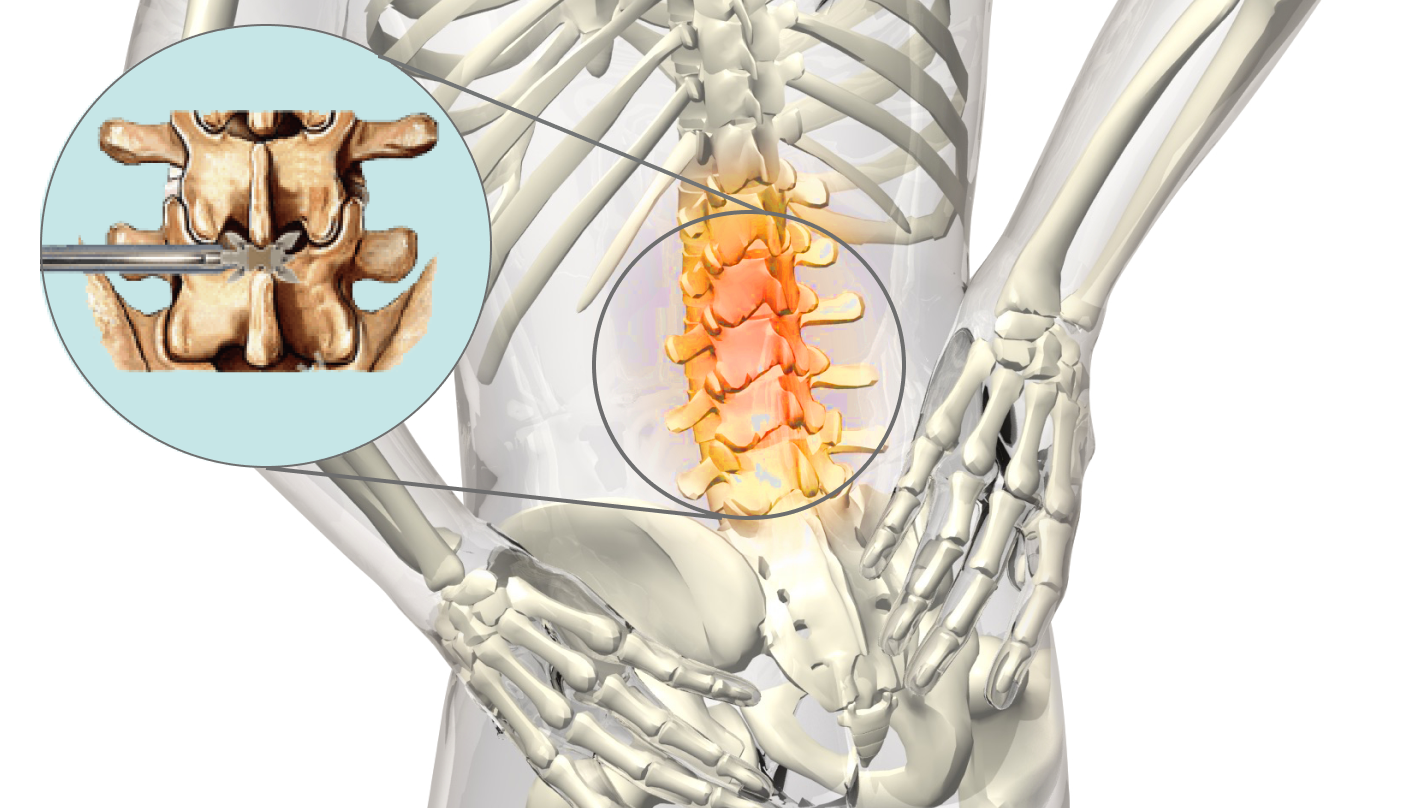
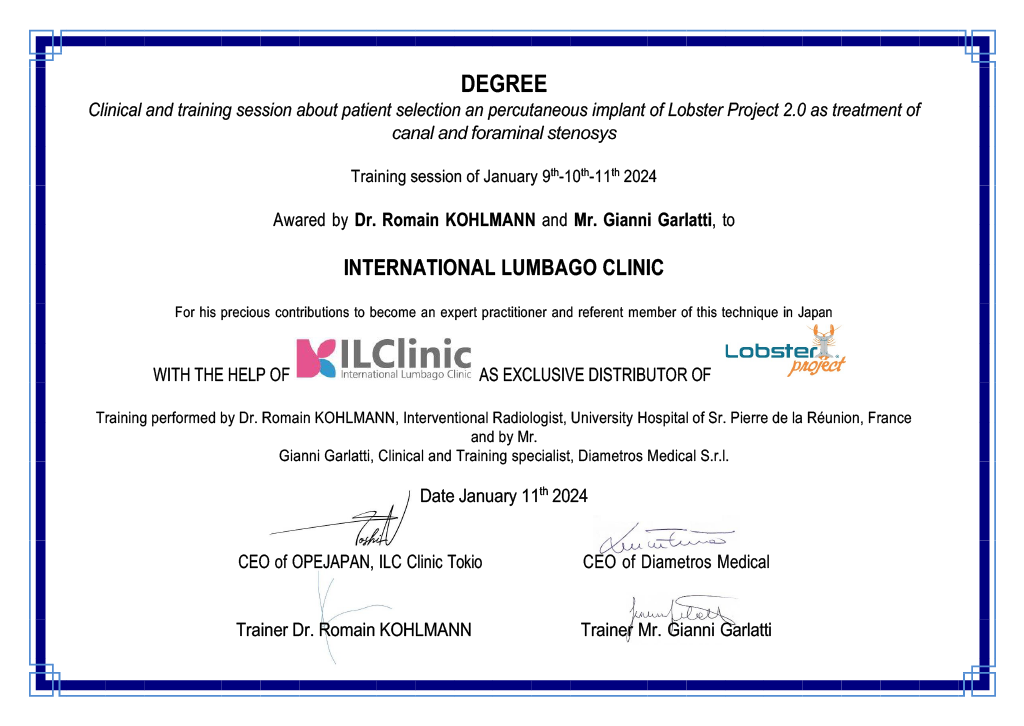
Florence method - Research and papers
Medical facilities around the world have published research results regarding Florence Method treatment. We will introduce some of them below.
| No | Country | Research paper title (Original Text) | Link |
|---|---|---|---|
| 1 | Greece, Italy, Ireland, USA, France | New Implant-Based Technologies in the Spine | https://pubmed.ncbi.nlm.nih.gov/29789873/ |
| 2 | USA, Italy | The Italian Renaissance - spacer style | https://pubmed.ncbi.nlm.nih.gov/32457223/ |
| 3 | Italy | Safety and Efficacy of Lobster®: a Multi-Centric Study | None |
| 4 | Italy, Qatar, Australia, USA | Successful use of percutaneous interspinous spacers and adjunctive spinoplasty in a 9 year cohort of patients | https://pubmed.ncbi.nlm.nih.gov/31974280/ |
| 5 | France, UK, Italy | Clinical and radiological outcomes following insertion of a novel removable percutaneous interspinous process spacer: an initial experience | https://pubmed.ncbi.nlm.nih.gov/35641830/ |
| 6 | Italy | Percutaneous Interspinous Spacer in Spinal-Canal-Stenosis Treatment: Pros and Cons | https://pubmed.ncbi.nlm.nih.gov/31315310/ |
| 7 | Australia, Italy, USA | The use of minimally invasive interspinous process devices for the treatment of lumbar canal stenosis: a narrative literature review | https://pubmed.ncbi.nlm.nih.gov/34734144/ |
Swipe left/righ
Florence method treatment method
Under local anesthesia and using an X-ray fluoroscope, an incision of approximately 1 to 2 cm is made in the back, a special tube is placed between the spinous processes of the lumbar vertebrae to be treated, and a spacer is ininserted.
The spacer wings are opened to widen the narrowed spinal canal.
The scar is small, and you will be able to rest for about 2 to 3 hours, and you can go home on the same day of treatment.

Diseases and symptoms treated
-
Diseases Treated
- Spinal canal stenosis
- Herniated disc with discogenic pain
- Facet joint disorders (facet arthritis, facet arthropathy)
- Mild degenerative spondylolisthesis
- Degenerative disc disease with posterior slippage
-
Symptoms Treated
- Pain in the legs and buttocks
- Groin pain
- Lower back pain
- Numbness or cramps
- Difficulty walking (intermittent claudication)
- Thickened ligamentum flavum
- The pain is only relieved when leaning forward.
- Thickened Facet joints
*We will provide treatment only if, after an examination, we determine that our clinic's treatment is appropriate for these illnesses and symptoms.
Targeted at people with these kinds of concerns
-
1
Pain in the buttocks and legs when walking makes it difficult to walk
-
2
Surgery (fusion, plastic surgery, etc.) is recommended.
-
3
Fear of surgical procedures such as spinal stenosis
-
4
I don't want to have surgery for spinal canal stenosis, etc.
-
5
Because I don't have time, I would like to receive an outpatient treatment
-
6
I want a treatment that puts less burden on my body.
*Treatment is also available for elderly people (over 80 years old)
Merit Advantages of performing the Florence method
-

Less burden on the body
It is a minimally invasive treatment that does not remove bone or damage ligaments.
-

Outpatient Procedure
Treatment time is about 30 minutes per area, and you will need to rest for about 2 hours after treatment. You can return home in about 3 hours.
-
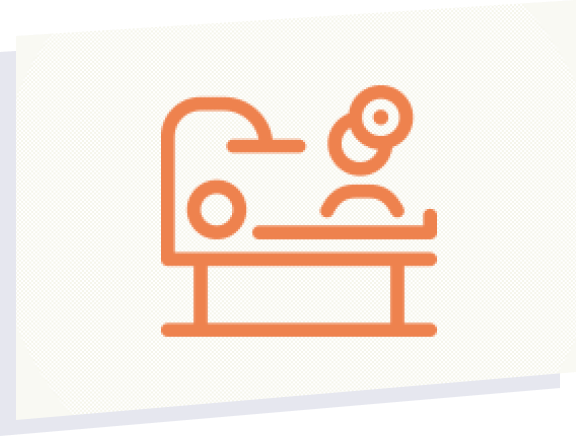
New treatment as an alternative to surgery
Treatment is possible even if surgery has not been effective.
About treatment time and side effects
- Treatment Time
- 30 minutes per location
You will need to rest for about 2 hours after treatment, and about 3 hours before returning home.
You can resume daily activities the next day, but you will need to postpone sports and heavy labor for about a month.
-
Things to Think About
If the cause of spinal canal stenosis is largely due to intervertebral discs or bones, the Florence method is unlikely to be effective and may not be applicable. Additionally, patients with severe osteoporosis may not be eligible due to the risk of fracture.
-
About Side Effects
There is a possibility of damage to surrounding tissues such as nerves and dura mater due to spacer insertion, but this has not been reported in our own cases or in any of the studies. There is also a very small possibility of an allergic reaction to local anesthetics.
Flow Florence Method Treatment Method
-

1. Inquiry
Our clinic is by appointment only, so be sure to make an appointment before visiting us.
Contact us on Whatsapp or by our contact form on this page.
-

2. Remote MRI Diagnosis
For Tokyo Clinic:
An MRI scan will be performed at a clinic affiliated with our clinic before your appointment at our clinic. Please send the MRI CD-ROM data to us via email prior to your visit. Also, if you have MRI images taken at another hospital, please let us know when you contact us.For Osaka Clinic:
The MRI scan will be performed at our clinic on the day of your appointment. -

3. Choose Treatment Date
If the diagnosis confirms that you're a suitable candidate for our treatments, you may proceed to make an appointment with us. Kindly keep in mind the time it may take for you to secure a visa to enter Japan. A Japanese tourist visa is sufficient.
-

4. Travel Arrangements
As we are an outpatient facility, you will be discharged on the same day as your treatment. Patients are asked to take care of their own visas, travel and accommodation arrangements.
-
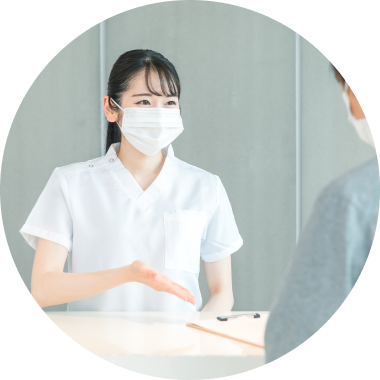
5. Pre-Treatment Examination
For Tokyo Clinic:
Please have your health insurance card, various medical certificates, image data, etc. ready when you come to the reception desk. After the check-in,, we will take X-ray images. After the X-ray, the doctor will spend approximately 30 minutes thoroughly examining the patient, and will consider and recommend the most suitable treatment plan for each patient.At the Osaka Clinic:
After the MRI/X-ray examination, the doctor will spend approximately 30 minutes thoroughly examining the patient, and will consider and propose the most appropriate treatment plan for each patient. -

6. Treatment
The Florence method is currently only performed at the Osaka clinic.
After your consultation at each clinic, if you wish to receive treatment, please coordinate the treatment date and time with the staff.
On the day of your treatment, since you have already been examined, so we will begin your treatment immediately after you change your clothes and prepare. Treatment time is approximately 30 minutes per area. -

7. Discharge
After the treatment, we provide a recovery room for you to rest for about an hour to 1.5 hours.
You are free to return home after the doctor examines you. -

8. Follow-up
We will contact you regularly for follow-ups after your treatment.
If you have any questions, please feel free to contact us.
Price Florence method treatment costs
| Number of Discs Treated | 1 disc | 2 discs |
|---|---|---|
| Treatment Cost | 1,540,000 JPY | 2,090,000 JPY |
* The cost of treatment is indicated including taxes.
*If treatment is performed at our clinic, all examination/diagnosis costs and test costs such as MRI are included in the above costs.
*This treatment method is not covered by Japanese health insurance, so you will have to pay for the entire treatment yourself.
*Payment by credit card (VISA, MasterCard, JCB, American Express, Diners, Discover) is also possible.
*If you would like rehabilitation (low back pain specialized rehabilitation), it is also possible to pay by bank transfer.
*If you live and work in Japan, you can receive a tax refund by filing your final medical expense return.
Other treatments at International Lumbago Clinic
-
Cellgel Method
An advanced low back pain treatment method that started around 2010 and has been introduced in more than 54 countries around the world, mainly in Europe. This is a treatment method that treats a wide range of back pain diseases and symptoms.
-
PODD Method(Percutaneous Ozone Disc Decompression)
Percutaneous Ozone Disc Decompression (PODD) has been performed mainly in Europe since the 1990s. It can be applied to facet joint disease, disc herniation, spinal canal stenosis, etc.
-
Hybrid Laser Method
This is a minimally invasive treatment for disc herniation that combines the benefits of both laser therapy (PLDD) and ozone therapy (PODD).
-
PLDD Method(Percutaneous Laser Disc Decompression)
Percutaneous Laser Disc Decompression (PLDD) has been has been the major outpatient disc laser procedure in Japan since the 1980s. It is the primary treatment of choice for herniated discs.
Our Treatment Methods versus Conventional Surgical Procedures
| Our clinic's treatments | Traditional Surgery | ||||||
|---|---|---|---|---|---|---|---|
| Cellgel | Hybrid Laser | PODD | PLDD | Florence |
Micro Endoscopic Discectomy (MED) |
Spinal Stabilization Vertebroplasty |
|
| Disc Restoration | ○ | × | × | × | × | × | × |
| Post-treatment Change in Disc Volume |
Same to increased | Slight to small decrease | Slight decrease | Small decrease | Same | Decreased or disappeared | Decreased or disappeared |
| Supressing of Inflammation |
○ | ○ | ○ | × | × | × | × |
| Duration of Treatment |
15–20 minutes | 20–25 minutes | 10–15 minutes | 10–15 minutes | 30 minutes | 40 minutes – 1 hour | 1–1.5 hours |
| Period of Hospitalization |
N/A (outpatient) |
N/A (outpatient) |
N/A (outpatient) |
N/A (outpatient) |
N/A (outpatient) |
About 1 week | About 1 month |
| Treatable Symptoms & Conditions |
Most lower back related conditions and symptoms | Disc herniation | Most lower back related conditions and symptoms | Disc herniation | Spinal canal stenosis, intervertebral disc hernia, facet joint disease, spondylolisthesis | Disc herniation, spinal tumor etc. | Spinal stenosis, spondylolisthesis, scoliosis, lumbar instability, intervertebral herniation, compression fracture |
Swipe left/righ
FAQ Q&A regarding the Florence method
-
QRegarding the difference in recurrence rate between the Florence method and surgery
-
ACommon surgical operations for spinal canal stenosis include laminectomy and spinal fusion, but severe back pain may recur within 10 years after surgery, the patient may be unable to walk long distances, or the patient may need reoperation. It is reported that this will happen. This is because the surgical procedure carries a high risk of damage to surrounding tissues such as ligaments and muscles, as well as new damage to bones caused by the screws. Therefore, the recurrence rate of symptoms is high after surgery.
On the other hand, Florence treatment is performed with local anesthesia, which is less risky, and because it is a percutaneous procedure that requires only a skin incision of about 1 to 2 cm, there is no damage to ligaments or muscles, and the recurrence rate is extremely low.
-
QHow does the doctor determine where to treat?
-
AThe doctor spends about 30 minutes carefully examining the patient while looking at the MRI and X-ray images, determines the cause of the patient's condition, determines the treatment area, and explains the corresponding treatment method to the patient. MRI images can confirm changes in the shape of intervertebral discs, nerves, ligaments, and joints, which are mainly associated with lower back pain, and we confirm changes in shape, pressure on nerves, presence of damage, presence of inflammation, etc. as well. X-ray images can mainly be used to check the condition of bones.
-
QCan the Florence method and Cellgel method be used together?
-
AThese two treatments can also be done at the same time. There is no problem in performing the Florence method after treatment with the Cellgel method.
-
QCan my symptoms temporarily worsen after treatment?
-
ANo, your symptoms will not worsen after treatment. Depending on the case, paresthesia in the lower limbs may improve immediately after treatment. For lower back pain, you may need to take pain medication after treatment.
-
QWhat level of exercise can I do after treatment?
-
AIf it is a hobby level of exercise or sports, it can be done without any problem.
-
QPlease tell me what to be careful of after treatment.
-
AAfter surgery, avoid lifting heavy objects and doing strenuous exercise that involves twisting, bending, or stooping. Light exercise will be possible in the second week. Weight training is possible after 3 months.
-
QIs it covered by insurance?
-
ANo, it is not covered by insurance. Please feel free to contact our staff.
-
QHow long and how far can I walk after surgery?
-
ABecause the treatment is outpatient only, you can walk home within 2 to 3 hours after the procedure.
-
QHow many clinic visits do I need before surgery?
-
AOne examination is required before the surgery date. At the first consultation, we will review the images together to confirm your current condition and decide which treatment method is best for you. If the Florence method is optimal, you will be scheduled for surgery on another day.
-
QAre there any restrictions on my means of transportation after surgery?
-
AIt is best to refrain from using public transportation for 3 days after treatment. From the third day onwards, you may only travel by train or plane if you are accompanied by a companion.


